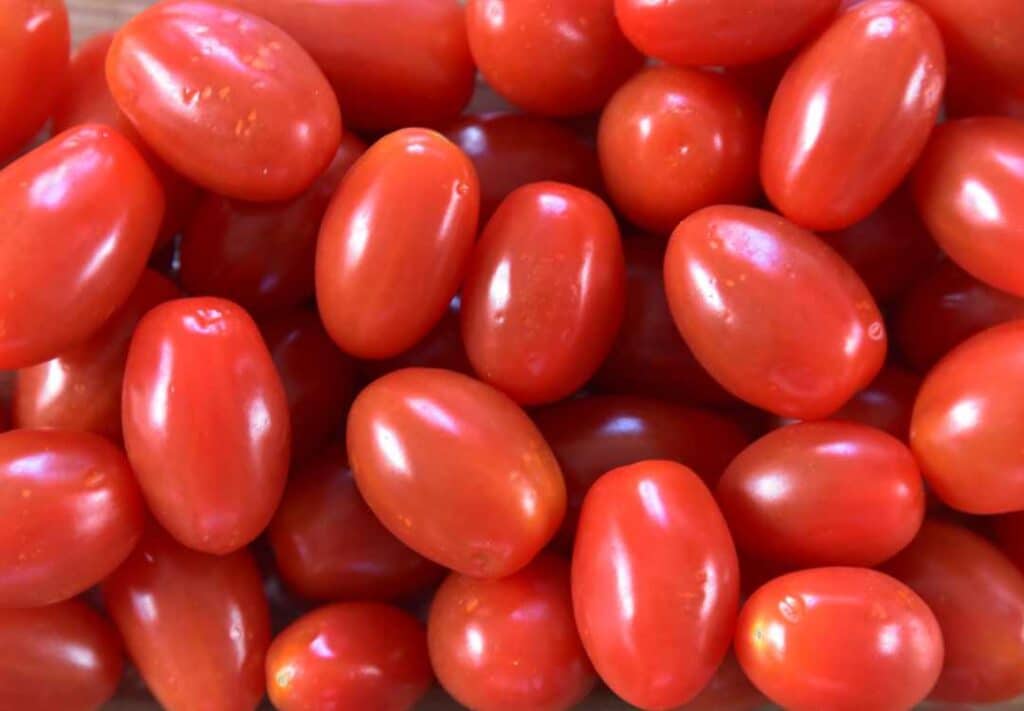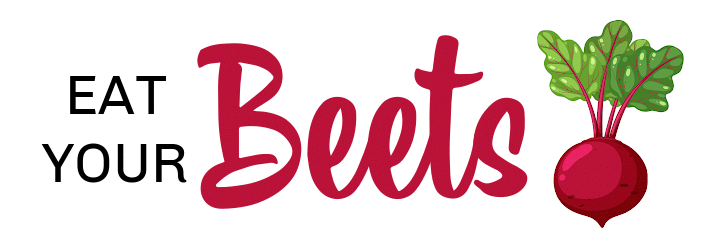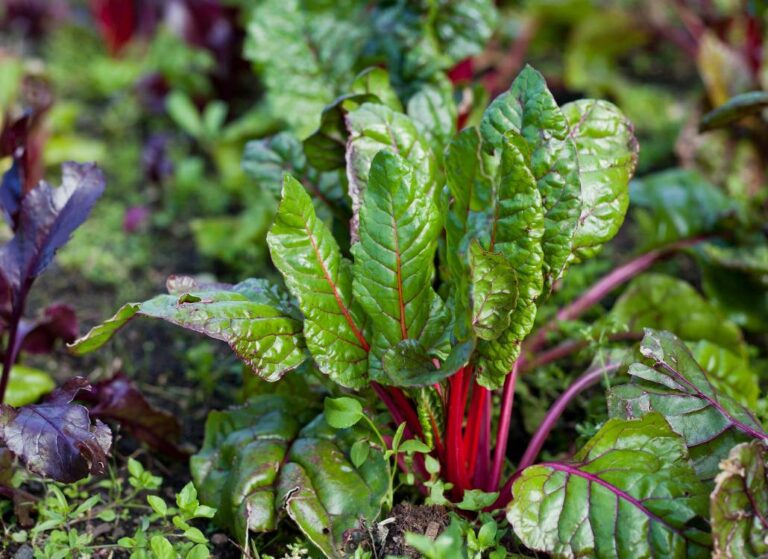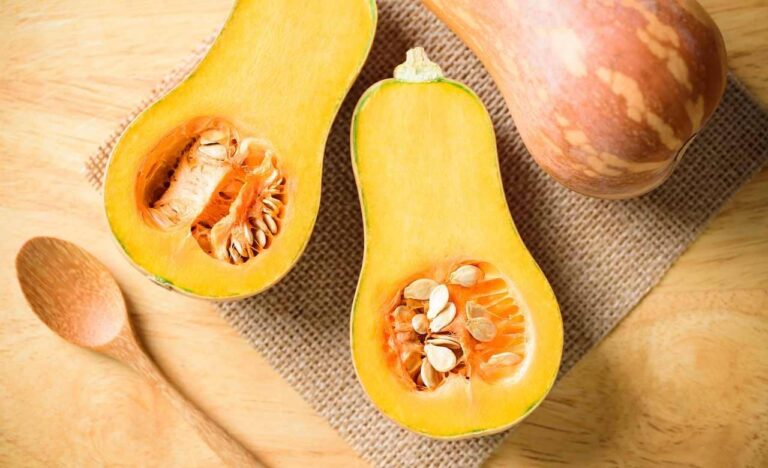Is Tomato a Fruit?
It’s a topic of debate that seems to linger on and still sparks lively conversations today: Is Tomato a Fruit or Vegetable?
On the one hand, you may have been taught that tomatoes are vegetables since childhood. On the other hand, botanically speaking, they may be categorized as fruits due to their sweet taste and seed-filled structure.
So what is it really? To answer this long-standing question, we will explore some science behind its classification, popular opinions about it in different countries around the world, nutrition facts related to its consumption, and more!

Contents
What Are Tomatoes?
Tomatoes are edible fruits that belong to the Solanaceae family, usually known as the nightshade family. Botanically, they are classified as berries.
Tomatoes are characterized by their bright red, yellow, orange, green, or even purple colors, and they come in various shapes and sizes, ranging from small cherry tomatoes to larger beefsteak tomatoes.
They are widely used in cooking and are a popular ingredient in so many dishes, including salads, sauces, soups, and sandwiches.
Tomatoes are not only flavorful but also rich in essential vitamins, minerals, and antioxidants, which makes them a nutritious addition to a healthy and well-balanced diet.
What Do Tomatoes Taste Like?
Tomatoes have a unique and distinct taste that may vary depending on the variety and ripeness. In general, ripe tomatoes are known for their sweet, juicy, and slightly tangy flavor. The sweetness comes from the natural sugars present in the fruit, while the tanginess is due to the presence of acids, particularly citric and malic acids.
The taste of tomatoes can also be influenced by factors such as the growing conditions, soil quality, and the time of harvest. Some tomato varieties may have a more intense flavor, while others may be milder.
Additionally, heirloom tomatoes and certain varieties bred for flavor can offer more complex and nuanced taste profiles compared to standard commercial tomatoes.
Overall, the taste of tomatoes is often described as refreshing, bright, and versatile, which is why they are widely used in numerous culinary applications and enjoyed in various dishes around the world.
Where Do Tomatoes Come From?
Tomatoes are believed to have originated in the western regions of South America, specifically in the Andes Mountains. They were first domesticated by ancient civilizations in this area, such as the Incas and Aztecs, who cultivated and consumed them as early as 500 BC.
Following the colonization of the Americas by the Spanish in the 16th century, tomatoes were introduced to Europe, where they gradually spread throughout the continent. Initially, they were grown as ornamental plants rather than a food source, as there were concerns about their edibility due to their close relation to poisonous plants like belladonna.
Eventually, tomatoes gained popularity as a food item, and they quickly spread to other parts of the world through trade and exploration. Today, tomatoes are cultivated in various countries and are one of the most widely consumed fruits/vegetables globally, playing a significant role in numerous cuisines and dishes worldwide.
How Are Tomatoes Grown?
Tomatoes are grown by planting seeds or seedlings in well-draining, fertile soil. Regular watering, proper support, and fertilizer application promote healthy growth.
Pests and diseases should be managed, and ripe tomatoes should be harvested carefully. With proper care, home gardeners can enjoy a plentiful supply of fresh and delicious tomatoes.
Wonderful World of Tomatoes: Types and Uses
Tomatoes, with their incredible versatility and delightful flavors, are a favorite ingredient in countless dishes worldwide. From salads to sauces, there’s a tomato variety for every culinary creation. Let’s explore the different types of tomatoes and how they can elevate your meals to new heights!
Globe Tomatoes: The Familiar Classic
Globe tomatoes, the ones commonly found in grocery stores, are medium-sized slicers perfect for salads and various dishes. With their thick skin and spherical appearance, they are shelf-stable and widely used due to their fresh taste and culinary flexibility.
Typically measuring between two and five inches in diameter, globe tomatoes are a kitchen staple.
Beefsteak Tomatoes: The Flavorful Giants
Beefsteak tomatoes, also known as big slicer tomatoes, are the go-to choice for sandwiches and burgers. These heavy slicing tomatoes feature tiny seed chambers, ensuring they retain their firmness when sliced.
Weighing up to a pound each and at least three inches in diameter, they offer a burst of rich, juicy flavor in every bite.

Cherry Tomatoes: Snackable and Sweet
Cherry tomatoes, reminiscent of wild varieties found in South America, are tiny, sweet, and perfect for snacking. These juicy gems burst with flavor under minimal pressure and typically measure less than one inch in diameter.

Plum Tomatoes: The Saucy Delight
Plum tomatoes, with their oblong shape, are the ideal choice for creating rich tomato sauces and pastes. Specifically developed for processing, they are perfect for roasting, freezing, or canning to enjoy the harvest’s goodness all year round. Measuring around two inches in length, their oval or cylindrical shape makes them a sauce-making favorite.

Oxheart Tomatoes: A Unique Heart-Shaped Delight
The heirloom variety, oxheart tomatoes, stand out with their large strawberry-like or heart-shaped appearance. Bred for their flavorful taste and thick consistency with tiny seed cavities, they are similar to beefsteak tomatoes.
Unlike lobed beefsteak tomatoes, oxheart tomatoes resemble globe tomatoes with a pointed end, adding a touch of uniqueness to your dishes.

Incorporate these diverse tomato varieties into your culinary adventures, and discover the delightful array of flavors and textures they bring to your meals.
Whether you’re making salads, sauces, or simply enjoying them fresh, these tomatoes are sure to be a delightful addition to your kitchen repertoire.
How Do I Know When Tomatoes Are Ripe and Ready to Eat?
Determining when tomatoes are ripe and ready to eat is essential for enjoying their full flavor and sweetness. Here are some signs to look for to know when your tomatoes are perfectly ripe:
Color
Most tomato varieties change color as they ripen. For example, green tomatoes will turn red, yellow, orange, or other hues depending on the variety. Look for the tomato’s characteristic ripe color.
Texture
Ripe tomatoes should feel slightly firm yet yield to gentle pressure when you squeeze them. Avoid tomatoes that are too soft or mushy, as they may be overripe.
Smell
Ripe tomatoes often have a sweet and earthy aroma at their stem end. Give them a gentle sniff to check for a pleasant, fresh scent.
Stem and Vine
If the tomatoes are still attached to the vine, they tend to ripen better and retain more flavor. The area around the stem should be plump and green.
Wrinkles and Cracks
Some tomato varieties may have slight wrinkles or cracks when fully ripe. These are natural signs of ripeness and don’t affect taste.
Taste Test
When in doubt, taste a small piece of the tomato. Ripe tomatoes should be sweet and full of flavor.
Remember that different tomato varieties have unique ripening characteristics, so understanding the specific traits of the tomatoes you are growing or purchasing can be helpful.
If the tomatoes are unripe, you can place them in a warm, sunny spot indoors to ripen further, but avoid direct sunlight as it may cause uneven ripening.
If the tomatoes are already ripe and you can’t eat them immediately, store them in the refrigerator to slow down further ripening.
Botanical and Legal Definitions to Determine Whether a Food Is Classified as a Fruit or a Vegetable
Indeed, there is a distinction between the botanical and legal definitions of fruits and vegetables.
Botanical Definition
In botanical terms, the term “fruit” is defined as the ripened ovary of a flower, typically containing seeds. It is one of the main classifications of plant parts in the botanical family.
When a flower is pollinated and fertilized, the ovary develops into a fruit, encasing the seeds and protecting them until they are ready for dispersal. Interestingly, this definition includes many food items that are commonly considered fruits, such as apples, oranges, and bananas.
However, it also encompasses some items that we often think of as vegetables, like tomatoes and cucumbers.
In the botanical realm, the edible part of a plant that develops from a ripened flower ovary is referred to as a fruit, regardless of its state as a sweet or savory component. Therefore, some state fruits may surprise us, as they can technically be classified as fruits due to their origin from flowering plants and the presence of seeds.
Legal Definition
The legal definition of what makes a food a fruit can sometimes differ from the botanical definition. In a legal context, the distinction between fruits and vegetables has been subject to debates and even legal disputes.
While certain botanical fruits, such as tomatoes and cucumbers, are considered fruits due to their development from flower ovaries and containing seeds, the legal definition can be influenced by culinary and agricultural practices.
Does the Difference Between the Scientific and Culinary Definition Matter?
The difference between the scientific and culinary definitions of certain fruits and vegetables can lead to interesting discussions but may not always have practical implications.
In botanical terms, fruits are defined by their development from flower ovaries and containing seeds, while vegetables are edible plant parts. However, in culinary contexts, the classification is often based on flavor characteristics and usage in dishes.
For Example:
Tomatoes, considered fruits in botanical terms due to their seed-bearing nature, are commonly used in savory dishes and described as having sweet flavor characteristics. This has led to legal debates, such as whether tomatoes should be classified as a state vegetable or a state fruit. Similarly, floating dandelion puffs, while technically fruits in botanical terms, are not typically used in culinary applications.
Ultimately, while the scientific and culinary definitions may vary, the practical impact of this distinction may be minimal for everyday cooking and consumption.
Is Tomato a Fruit?
The tomato always seems to spark a debate on whether it is a fruit or a vegetable. So, let’s take a look at it from both a botanical and a culinary perspective:
The Botanical Classification: Tomatoes Are Fruits
Botanically speaking, tomatoes are classified as fleshy botanical fruits, as they develop from the ovary of a flower and contain seeds. In botanical terms, any edible product that arises from the flower ovary and bears at least one seed is considered a fruit.
This includes tomatoes, as well as other sweet fruits like cantaloupe melons. Interestingly, green beans and butternut squash are also considered fruits by botanical categorization since they fit the definition of seed-bearing products derived from flowers. Despite their sweetness, tomatoes fall into the same botanical family as these other fruits due to their botanical characteristics.
Therefore, while culinary usage and practices might lead us to consider tomatoes as vegetables, in the world of botany, they remain unequivocally classified as fruits. In fact, in some states, tomatoes are recognized as the official fruit, highlighting the significance of their botanical classification.
The Culinary Classification: Tomatoes Are Vegetables
Culinary classification considers tomatoes as vegetables due to their typical savory usage and flavor profile. While botanically, they are fleshy botanical fruits, culinary practices often categorize them as vegetables because they are more commonly served in savory dishes.
Similarly, green beans and butternut squash, despite being botanical fruits, are also considered vegetables in culinary contexts. This distinction is based on how they are used and perceived in culinary traditions.
Unlike sweet fruits like cantaloupe melons, tomatoes are generally not eaten as stand-alone desserts but are instead incorporated into salads, sauces, and various cooked dishes.
Hence, while botanically speaking, tomatoes and related plants fall into the same botanical family as sweet fruits, they are commonly considered and used as vegetables in culinary settings.
Tomatoes Are Fruits Vegetables
Tomatoes are unique in that they are considered both a fruit and a vegetable. There is no hard and fast rule on this age old question, but it ultimately comes down to how they are classified for culinary purposes.
Despite being commonly referred to as a vegetable, tomatoes are technically a fruit due to the presence of seeds. This classification may seem confusing, but it is not uncommon. In fact, there are many other fruit vegetables, such as cucumbers and eggplants.
Ultimately, whether you choose to classify a tomato as a fruit or vegetable is up to you, but one thing is for sure – they taste delicious no matter how you slice it.
Nix v. Hedden Case
A landmark U.S. Supreme Court ruling in 1893 declared that tomatoes should be classified as vegetables for tariff purposes. This decision was based on the understanding that vegetables tend to be used in savory dishes, while fruits are typically associated with sweet or dessert items.
As a result, the legal classification of certain botanical fruits can be influenced by how they are commonly used in culinary contexts and closely related agricultural practices.
Can I Grow Tomatoes in Containers or Small Spaces?
Tomatoes are actually a botanical fruit, even though many consider them a vegetable. While they may seem like a challenging plant to grow, tomatoes can thrive in containers or small spaces with a few tips for successful gardening.
One unique aspect of tomato plants is that they originated from wild tomato species. However, over the years, they have been cultivated and transformed into the familiar tomato plant we know today.
It’s also worth noting that tomato plants are Tennessee state’s official fruit. To be successful with your container tomato garden, ensure that they have ample sunlight, adequate drainage, and consistent watering.
Also, don’t forget to offer support to the plants as they grow to keep them healthy and produce delicious tomatoes.

What Are the Health Benefits of Tomato Fruit?
Tomatoes are among the world’s most popular fruits, praised for their nutritional and culinary versatility. Besides their delightful taste, they also offer many health benefits.
For instance, tomatoes are rich in vitamin C, essential for maintaining a healthy immune system. They are also packed with antioxidants that help fight many diseases, including cancer and heart disease.
Additionally, tomatoes come in numerous varieties, each with its unique flavor and texture. Unfortunately, there is currently a legal dispute regarding the labeling of tomato products as vegetables, but this does not detract from the numerous health benefits that these fruits provide.
Furthermore, thanks to their disease resistance, tomatoes are relatively easy to cultivate and are widely available in supermarkets and farmers’ markets worldwide. Read more benefits of tomato soup!
Use Tomatoes in Daily Recipes
Tomatoes are a highly adaptable ingredient that can be utilized in numerous dishes.
- One way to use tomatoes is by using tomato paste which gives a rich, concentrated tomato flavor.
- Another way is by using raw tomatoes, which are great for salads, sandwiches or as a snack. For a soft texture, tomato sauce can be used in pasta, casserole or even on top of pizza.
- Tomatoes can also be used in stir fries, giving a fresh pop of color and juicy burst of flavor. Toasts, wraps and burgers are typically served topped with tomatoes.
Additionally, tomatoes are known for their disease resistance, making them a healthy addition to any meal. With so many ways to incorporate them, tomatoes are a delicious as well as nutritious addition to any daily meal.
Tomato-Based Dishes From Different Cuisines Around the World
Tomatoes are a versatile ingredient used in cuisines around the globe. In the Middle East, tomatoes are often incorporated into dishes as a key ingredient, such as in shakshuka, a breakfast dish made with poached eggs and a tomato-based sauce.
In addition to being a main ingredient in many dishes, tomatoes are also enjoyed as a snack in countries like Italy, where sliced tomatoes are served with fresh mozzarella and basil as a simple yet delicious appetizer.
Across cultures, tomatoes have found their way into a variety of dishes, whether it be as a main dish or a small snack.
Are There Any Tomato Varieties That Are Particularly Suitable for Making Sauces or Salsas?
If you’re looking to make a delicious tomato sauce or salsa, there are a few varieties of tomatoes that are better suited for the job. Wild tomatoes are a popular choice, as they have a tangy flavor that pairs well with other ingredients.
Roma tomatoes are also a great option, as they are firmer and less juicy than other tomatoes, making them easier to cook down into a thick sauce. If you prefer a sweeter sauce or salsa, cherry tomatoes are a good choice, as they have a natural sweetness that can add depth of flavor.
Additionally, using a raw tomato may not be the best choice as it can produce a watery sauce. But with these varieties, you’ll be well on your way to creating a delicious and flavorful sauce or salsa.
Make Tomato Ketchup at Home
Making your own tomato ketchup at home couldn’t be any simpler!
All you need is a medium sized tomato, preferably a raw one. First, wash and cut the tomato into small pieces and put it in a blender. The tomato has a sweet taste and many seeds, which gives it a nice texture.
Pour the blended tomato into a saucepan and cook it on low heat; keep stirring occasionally until the juice thickens. Once it’s thick enough, add a pinch of salt to enhance the flavor and a tablespoon of sugar or honey, depends on your preference.
Continue to cook on low heat until the ketchup has the desired consistency. And there you have it, fresh home-made tomato ketchup that is not only taste but also free of preservatives.






